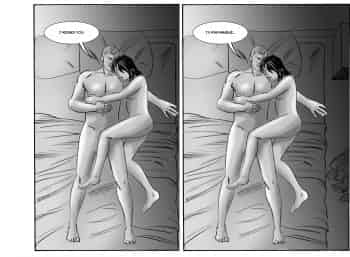Avoir des femmes en contrôle : la relation de Eva et de Benson – Partie I
Chris Sims analyse le rôle de la maîtresse et ses interactions avec le héros. Il met en lumière :
« And those are, in all honesty, the best case scenarios for a lot of love interests. Like everything in a comic book story, they exist to create drama, but superhero comics have historically had a very specific kind of drama in mind when it came to the fates of romantic partners, especially, overwhelmingly, women: They tend to wind up dead for the sake of a cheap thrill and setting up a villain. It’s a cliché so prominent that it’s become one of the best known tropes of the genre, and while that’s frustrating and detrimental on a lot of levels, it also has the very practical function of almost requiring new love interests to be introduced. » (« Ask Chris #260: Love, Exciting And New; On the Dramatics of Superhero Love Interests », http://comicsalliance.com, October 2, 2015).
Tasha Robinson va dans le même sens lorsqu’elle affirme : « If she does accomplish something plot-significant, is it primarily getting raped, beaten, or killed to motivate a male hero? Or deciding to have sex with/not have sex with/agreeing to date/deciding to break up with a male hero? Or nagging a male hero into growing up, or nagging him to stop being so heroic? Basically, does she only exist to service the male hero’s needs, development, or motivations? » (« We’re losing all our Strong Female Characters to Trinity Syndrome », http://www.huffingtonpost.com, June 16, 2014).
En ce sens, Sims precise: « adding in a love interest is one of the best ways to reveal something about a character’s personal life — the type of thing that really makes you care about them beyond just getting into a punch-up with someone who’s trying to rob a bank while dressed as an egret or whatever — but it’s also a purely functional way to add in entirely new worlds of drama.» (« Ask Chris #260: Love, Exciting And New; On the Dramatics of Superhero Love Interests », http://comicsalliance.com, October 2, 2015). Le personnage féminin est motivé par ses propres intérêts qui permettent de révéler les sentiments de d’autres personnages.
Nous ne croyons pas que de créer des personnages féminins forts signifie de les mettre dans les mêmes positions que les hommes. Bref, au lieu d’avoir utilisé un homme, on crée une femme et on la fait agir de la même façon que sa contrepartie masculine. Dans l’aventure « Home sweet home », il y a une petite phrase qui permet de départager la relation entre Eva et Benson. C’est Benson qui indique à Eva qu’il s’est ennuyé d’elle.



